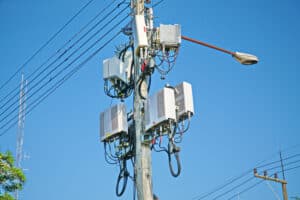
HR Green Hosts Educational Webinar Addressing FCC’s New Preemption for Communities

Includes legal insights from Attorney Bart W. Miller to discuss the impact of the FCC regulations on communities
The Federal Communications Commission’s (FCC) new preemption order for local authorities over small cell wireless facility deployment and management of local rights-of-way has left many communities confused and troubled. HR Green, Inc. (HR Green) is offering a free webinar to help communities address the challenges of 5G deployment and the new FCC Small Cell Preemption Order.
For more information and registration, please visit: www.hrgreen.com/FCCwebinar
Webinar participants will learn from HR Green Small Cell/5G Policy Consultants how, despite this new legislation, local governments can maintain authority and flexibility. The discussion will focus on how local governments can establish reasonable regulations and public policies governing small cell deployments.

In addition, the webinar will address:
- Concerns such as aesthetics, zoning, ordinances, design standards, and public safety
- Public policies that can effectively manage public rights-of-way
- Collaborating with telecommunication providers and stakeholder agencies to revisit permitting programs and practices
- How to make it easier for jurisdictions to process applications reasonably and expeditiously
About the FCC Small Cell Preemption
On September 26, 2018, the FCC approved an order to enact preemptions of local authority over small cell wireless facility deployment and management of local rights-of-way. Meant to expedite and streamline the national rollout of millions of new cell towers and antennas for 5G deployment, the new ruling is requiring a “shot clock” with mandatory approvals of small cell towers.
This order will shorten the time cities must process applications, places limits on permit and recurring fees, and prohibits cities from assessing fees beyond a “reasonable approximation” of “reasonable costs” for small cell deployments. In addition, it limits aesthetic review and requirements of facilities, such as small cells and distributed antenna systems, proposed for installation to public rights-of-way.
